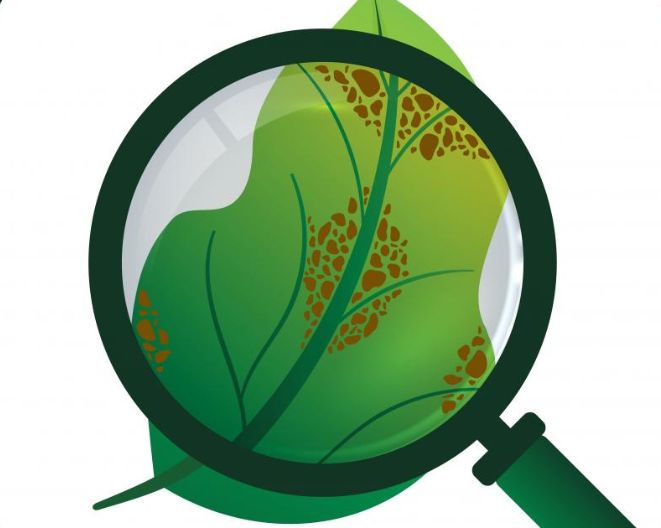Diagnosis –process used for the identification of problems.
Preliminary Considerations:
Symptoms – plant reactions or alterations of a plant’s appearance due to a disease or disorder
- Proper plant identification of plant is critical.
a. Scientific vs. common names
b. Variety or cultivar
c. Observe present appearance of Plant.
2. Recognize healthy plant appearance.
a. What’s normal for specific plant?
b. Compare with healthy plants of same genus, species and cultivar.
3. Consider the Possible Agents.
a. Abiotic – non-living agent
i. Damage from chemicals, weather, mechanical
ii. Nutritional problems
b. Biotic – living agent
i. Pathogens – parasitic microorganisms that cause diseases
ii. Pests – insects or mammals feeding on or damaging plants
4. Consult literature resources for possible diseases and disorders.
a. Indexes listing hosts and their pathogens
b. Websites providing information
c. Books with background info and host/pathogen lists
5. Investigate symptom progression.
a. Biotic disease – symptoms progress and nearby plants become infected.
b. Abiotic disease – generally a lack of symptom progression. Does not
spread.
c. Exception – nutritional symptoms progress slowly.
6. Ask questions
a. When was, the problem noticed?
b. Was the damage sudden or gradual?
c. How old are affected plants?
d. Percentage of plants affected?
e. What is the degree of injury?
7. Observe patterns.
a. Determine prevalence of problem
i. Large area/All plants – generally abiotic
ii. Scattered, localized – generally biotic
b. Check for distribution of symptoms
i. Uniform – generally abiotic
ii. Random – generally biotic
8. Review cultural practices.
a. Proper planting technique
b. Fertilizer and pesticide application
c. Irrigation frequenc
9. Review environmental conditions.
a. Temperature extremes
b. Drought or excess rain
c. Soil type and conditions
10. Check for symptoms and signs.
Symptoms – plant reactions or alterations of a plant’s appearance due to a disease or disorder
Signs – actual pathogen, parts or by-products seen on a diseased host plant
a. Identify and classify symptoms
i. Underdevelopment
ii. Overdevelopment
iii. Necrosis or death
iv. Alteration of normal appearance
v. Wilting
b. Identify plant parts affected
11. Laboratory Examination and Testing
a. Compound microscope
b. Electron microscope
c. Culturing
d. Additional tests for biotic agents
e. Tests for abiotic agents
12. Diagnostic tests for abiotic causes
a. Soil, water
i. pH testing
ii. Nutrient analysis
iii. Soluble salts analysis
iv. Analysis for chemicals
b. Plant tissue tests
i. Nutrient analysis
ii. Analysis for chemicals








